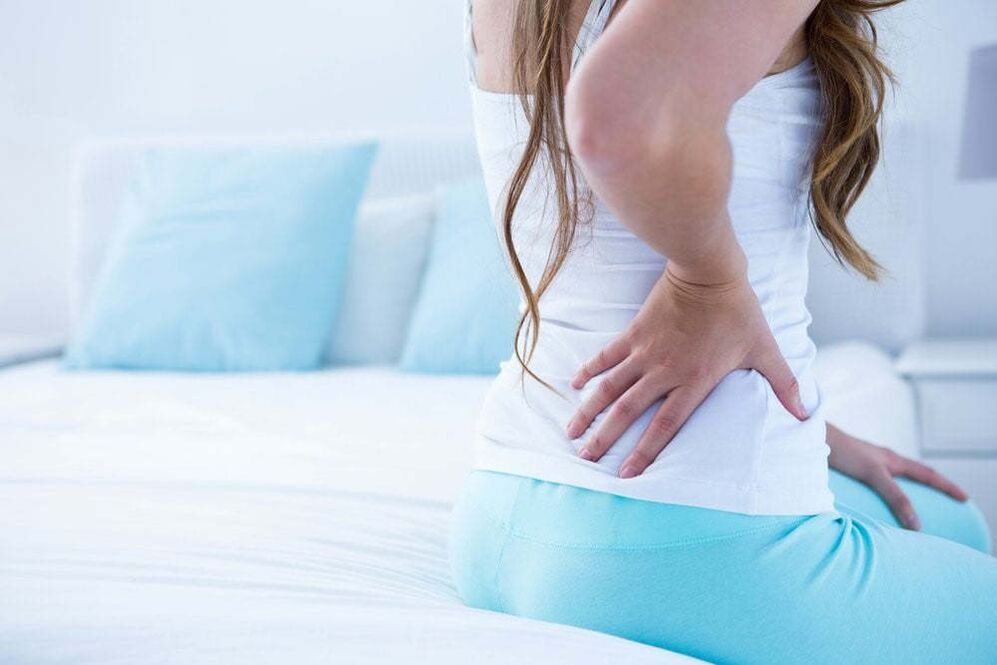
With age, discomfort gradually appears in different departments and systems. After the age of 25, patients often experience low back pain with variable intensity. If you ignore this symptom, you may lose the ability to perform normal movements. Eliminating the pain syndrome with the help of analgesics is the path to nowhere, more precisely, to the chronic course of the disease. Only with timely diagnosis and treatment can the disease be in long-term remission or complete recovery.
Over time, the duration of the exacerbation becomes longer. Acute pain begins to bother even during rest, and not only during physical activity. This image is typical for lumbar osteonecrosis. This disease is characterized by destruction of the cartilage that lies between the vertebral discs. Its thin and deformed tissue leads to protrusion, lumbar hernia. In the clinic, patients can be diagnosed as well as treated, regardless of the cause of the pain syndrome.
Causes of back pain
Tightness and discomfort in the visual area impair the ability to work. A person unable to move upright, the patient often loses self-help skills in daily living. One of the most common causes of the disease is compression of the roots extending from the spinal cord. At the time of strong muscle tension, when turning strongly, there will be "low back pain" or low back pain. A sharp pain accompanies the patient for several hours. The patient described her personality as "burning", "exploding".
The cause of discomfort in the lumbar spine is a herniated disc. With trauma or age, the pulp nucleus loses its firmness and elasticity. If the problem is aggravated by osteoporosis or being overweight, the fibrous capsule of the disc becomes thinner. Through these weaknesses, the pulp nucleus protrudes. Its displacement leads to acute pain. Chronic conditions that cause discomfort in the visual area include:
- osteomyelitis;
- spondylolisthesis;
- scoliosis;
- ankylosing spondylitis;
- spinal tuberculosis;
- rheumatoid arthritis;
- malignant tumor.
Lower back pain is also caused by diseases of the internal organs, damaged soft tissues. Very common causes of pathology are endometritis, endometriosis (in women), adenomas, and prostatitis (in men). Diseases of the intestines, stomach, and kidneys can also trigger an acute attack.
Low back pain treatment
Which doctor should I see for help? If even mild but persistent discomfort in the lower back occurs, you should see a therapist. The initial examination and history collection becomes a good reason for ordering an additional examination. At the clinic, blood and urine tests are prescribed, an ultrasound of the kidneys is performed and the presence of malignancies in the abdominal cavity is excluded.
In some situations, further consultation with a neurologist, pediatrician, gynecologist is required. CT scans and X-rays will help clarify the diagnosis and locate the destruction of the spine or soft tissues. The composition of diagnostic screening procedures for each patient may vary. It all depends on the specific clinical picture. Depending on the cause of the disease, different treatment methods are used.
Manual therapy
This method is often applied to osteonecrosis of the lumbar spine. It allows you to fully recover or be in long-term remission. Impacts on joints and bones can only be performed with the help of a chiropractor. At the initial stage, the traction method is used, as a result of which the pain syndrome is relieved. Moreover, all the efforts of the doctor are directed towards the restoration of the cartilage structure. All craft techniques are done with care, in a gentle manner. As soon as the patient feels severe discomfort, he informs the therapist about it. The doctor stops all manipulations until the state of health returns to normal. Thereafter, correction continues until the obvious causes of the disease are eliminated.
Osteopathy
This technique is a whole philosophy, based on the desire for the freedom of any movement. The chiropractor will affect the skeletal system and surrounding soft tissues. Clamping muscles can cause pain and limit joint movement. Once the therapist manages to achieve complete relaxation, half the way to recovery is over. The technique does not cause pain, does not enhance the syndrome. The patient's condition improved markedly after the first session. His work is delicate and precise. The work is done based on the health status of the patient.
Mining Kinesio
Treatment of low back pain common in athletes and those who regularly engage in substantial physical activity. On the site of local destruction, a special elastic bandage is glued - kinesio tape. Does not cause discomfort, does not interfere with movement when awake during the day.
At the diagnostic stage, the specialist determines the cause of the violation, as well as the exact place of implementation. Lightweight muscle support contributes to precise muscle corset formation. The band literally "makes" the back when walking, preventing a stooped posture. Optimal joint support prevents acute disease from progressing to chronic.
Tight muscles are fully relaxed, while remaining firm for active movement without pain. Improved blood microcirculation in soft tissues allows cartilage tissue to receive adequate nutrition. Kinesio back pain tape is used as a primary treatment for dislocation, injury or low back pain. The movements become smooth, and the gait becomes light.
UHT
Shock wave therapy is a modern method of treating osteosarcoma of the spine, spinal cord injury, ankylosing spondylitis and other pathologies. Complementary drug therapy is not used. The sound wave action is generated by non-invasive methods without violating the integrity of the skin. This is an additional security measure to prevent infection.
Di-Tazin therapy
The treatment for this acute pain in the lumbar spine involves the application of Photoditazine. Moreover, through the installation of LED lights, the drug is activated, penetrating into the deep layers of the skin. It can be used successfully in the treatment of herniated discs. The increased blood circulation ensures a constant supply of nutrients to the bones.







































